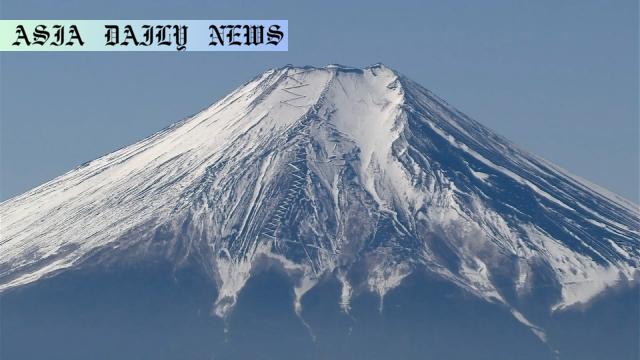Mt. Fuji regulations: Shizuoka Prefecture enacts new rules including a 4,000 yen fee and time restrictions to ensure safer climbs.
Shizuoka Prefecture enacts a 4,000 yen fee for climbing Mt. Fuji.
New ordinance restricts climbing hours for improved safety.
Tourists can now register and pay fees via an app.
Rules aim to prevent accidents and manage overnight climbs efficiently.
No penalties for non-compliance currently complicates enforcement.

Introduction to New Mt. Fuji Climbing Regulations
In a proactive move to enhance safety and manage the climbing experience on Japan’s iconic Mount Fuji, Shizuoka Prefecture has introduced new policies targeting climbers. The central Japanese region, renowned for its access routes to Mount Fuji, has implemented measures aimed at addressing growing concerns over reckless climbing behavior. The new ordinance, which includes a mandatory fee and stricter time regulations, signifies an effort to prioritize safety and environmental preservation while ensuring a structured experience for climbers.
Implementation of Entry Fee: A Step Towards Accountability
One of the central tenets of the new regulations includes a 4,000 yen (approximately $28) entrance fee for hikers commencing their climb from the Shizuoka Prefecture side. This fee, which is applicable to all climbers, reflects a broader effort to fund maintenance and safety measures. The cost is part of a growing recognition of the monetary and resource burdens required to sustain Mount Fuji’s trails and address accidents or emergencies. The ordinance also underscores the prefecture’s commitment to accident prevention and crowd management during the peak climbing season.
Regulating Climbing Schedules for Safety
In addition to the entrance fee, Shizuoka’s regulations now restrict access to the 5th Station gates during specific hours. These measures discourage overnight climbs, an increasingly risky practice that is both dangerous for climbers and resource-intensive for responders. Limiting climbing hours represents a deliberate attempt to align climber behavior with environmental factors while reducing avoidable mishaps. Ensuring a controlled timeline not only protects climbers but also aids in reducing the environmental toll on the trails.
Challenges in Enforcement
Despite these promising developments, enforcing these regulations remains a challenge, particularly due to the lack of penalties for violators. Reports have surfaced of climbers ignoring restrictions by bypassing closures or proceeding despite unresolved safety concerns. With tourism on the rise, the prefecture must consider additional mechanisms to ensure compliance. Some potential solutions include incentivizing adherence through better educational campaigns or introducing minimal fines to discourage rule-breaking without alienating tourism revenue.
The Role of Technology in Registration and Compliance
Another noteworthy aspect of the ordinance is the introduction of an app-based registration system. Designed to simplify compliance, the app allows climbers to pay entry fees and complete necessary formalities in advance, streamlining the process and reducing bottlenecks. Early adoption figures suggest growing public awareness, with over 500 registrations reported shortly after its introduction. This reflects both the potential for technological solutions and the willingness of climbers to adhere to structured regulations when the process is transparent and hassle-free.
Broad Implications for Mount Fuji as a Tourist Attraction
Mount Fuji, a UNESCO World Heritage site, remains a pivotal destination for global travelers. However, these regulations seek to maintain its charm while mitigating the adverse impacts of over-tourism and negligence. With nearly 300,000 climbers visiting each year, sustainability and safety are paramount. Similar steps are being taken by Yamanashi Prefecture, further underscoring the collaborative effort to secure the mountain’s future. While raising awareness about potential dangers and fostering a culture of responsibility among climbers, these measures aim to build a lasting balance between accessibility and conservation.
Commentary
Introduction: A Balanced Step Forward
The introduction of climbing regulations for Mount Fuji by Shizuoka Prefecture is a thoughtful measure designed to protect climbers and the environment. The iconic mountain, which draws thousands from across the world every year, requires stringent policies to cope with the ever-increasing footfall. This initiative signals the prefecture’s dedication to balancing tourism growth with sustainable practices, a noteworthy endeavor.
Addressing Existing Risks
Mount Fuji’s rugged trails are not to be underestimated. Over the years, reports of accidents and emergency rescues have highlighted the inherent risks of climbing a peak that demands preparation and caution. Restricting overnight climbs and maintaining a clear framework for trail access are practical steps to reduce risks. However, the lack of enforceable penalties could prove to be a loophole, leaving room for non-compliance.
The Role of Climbers in Ensuring Success
Ultimately, the success of this policy depends on the mindset of climbers. Raising awareness about the importance of adhering to these regulations is critical. With many tourists and adventurers unaware of safety guidelines or environmental concerns, collective ownership of Mount Fuji’s welfare can significantly amplify the ordinance’s positive impact.
Technology: Bridging the Gap
The implementation of a dedicated app for registration and fee payment marks a step in the right direction. Modern-day travelers appreciate convenience, and making the process digital eases adoption. The app’s success could serve as a model for similar initiatives in other travel hotspots, promoting smoother and more efficient management of visitor access.
Final Thoughts
While the new regulations might take time to be universally accepted, the intent behind their introduction is commendable. Encouraging safer climbs and maintaining Mount Fuji’s ecological integrity are goals that resonate with both locals and international visitors. By continuing to refine these guidelines and strengthening enforcement measures when necessary, Shizuoka Prefecture has set a precedent for sustainable tourism that other destinations may well emulate.


